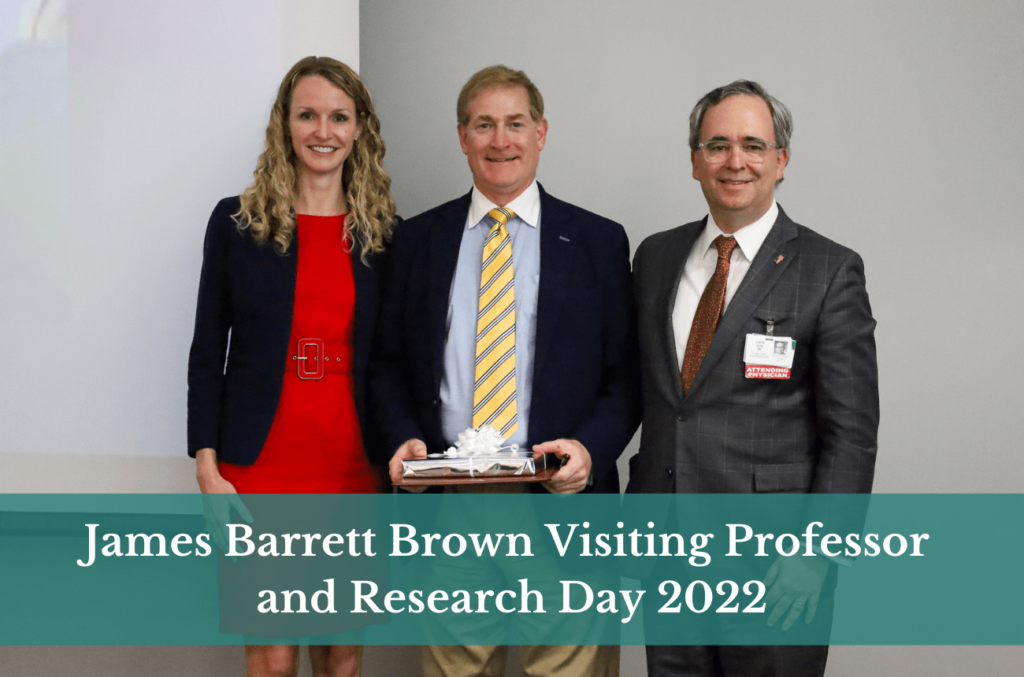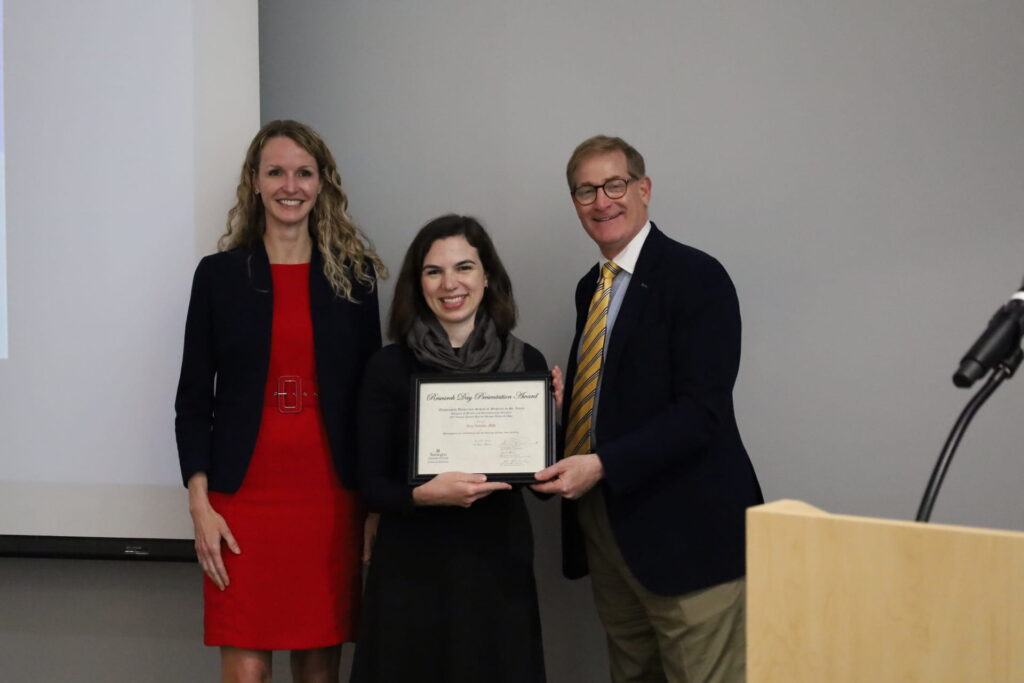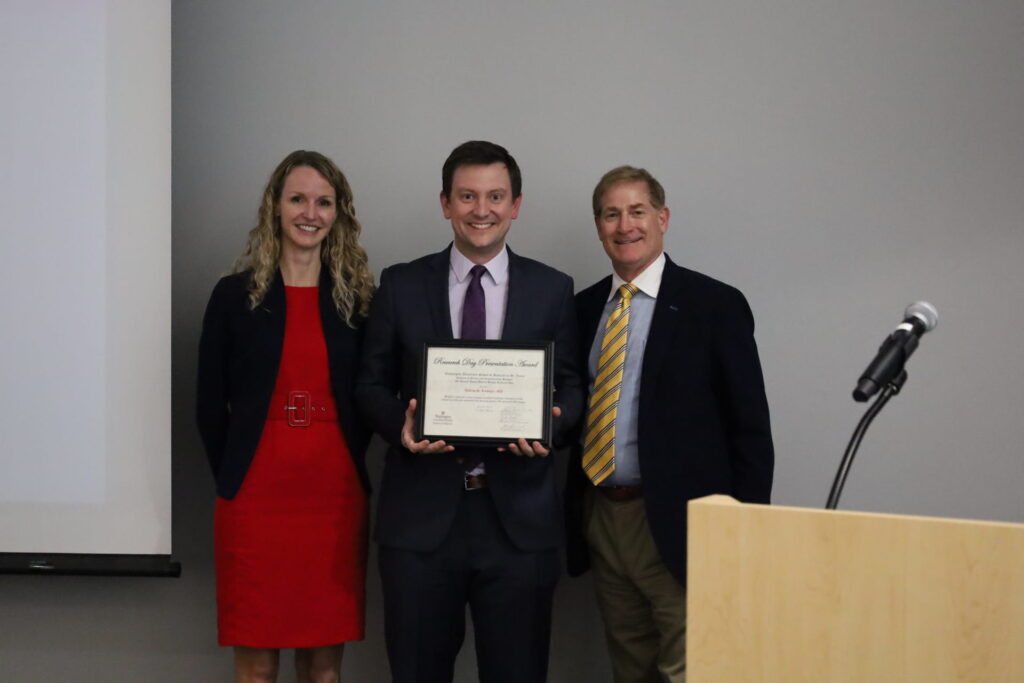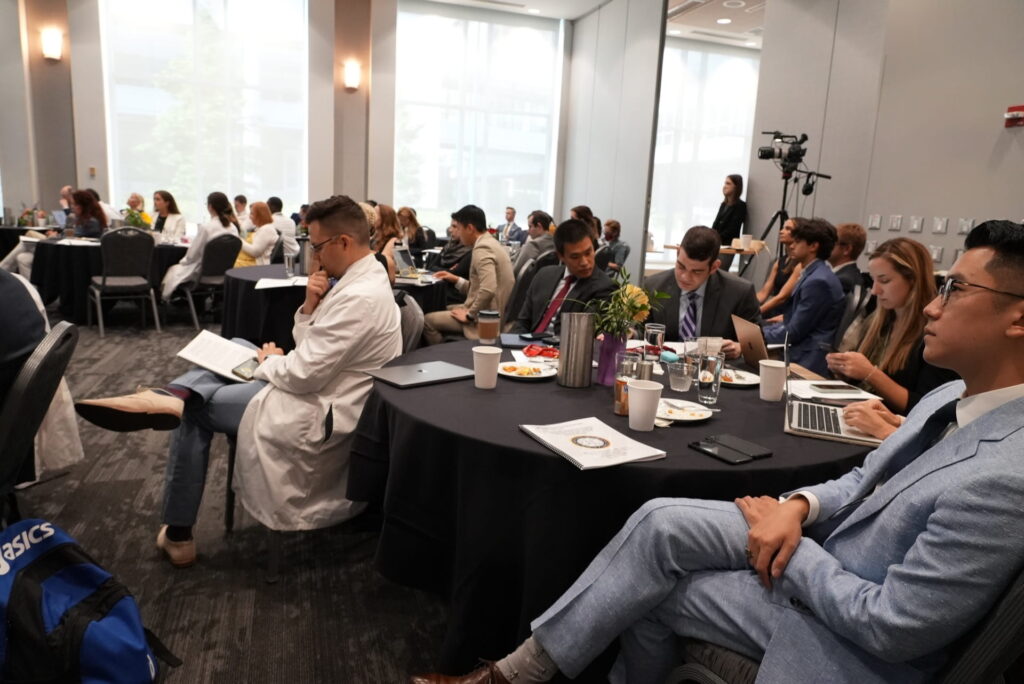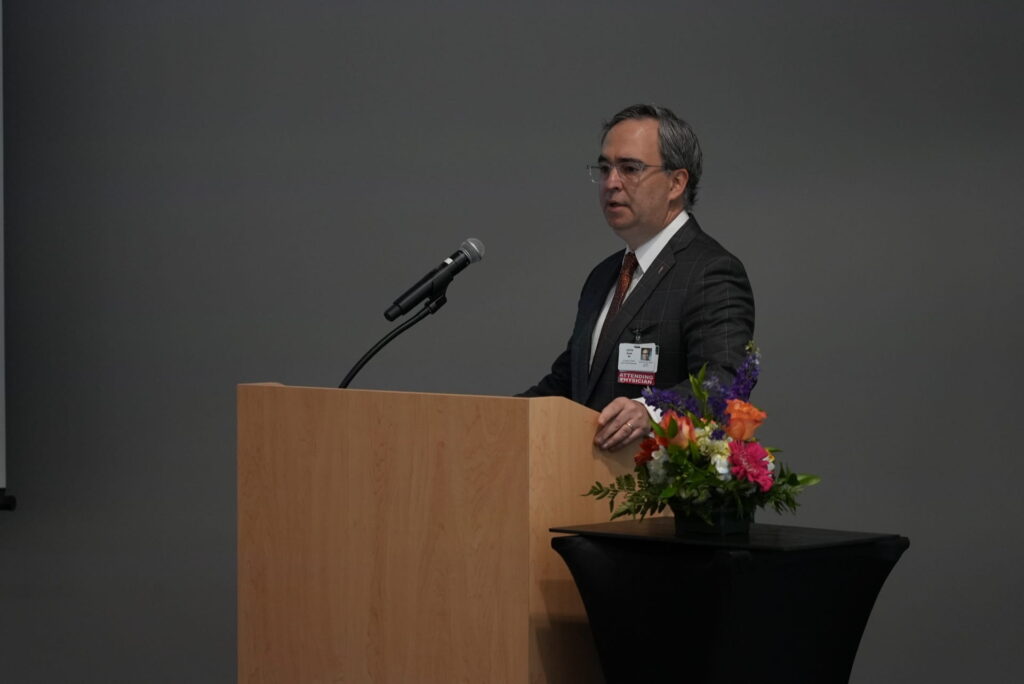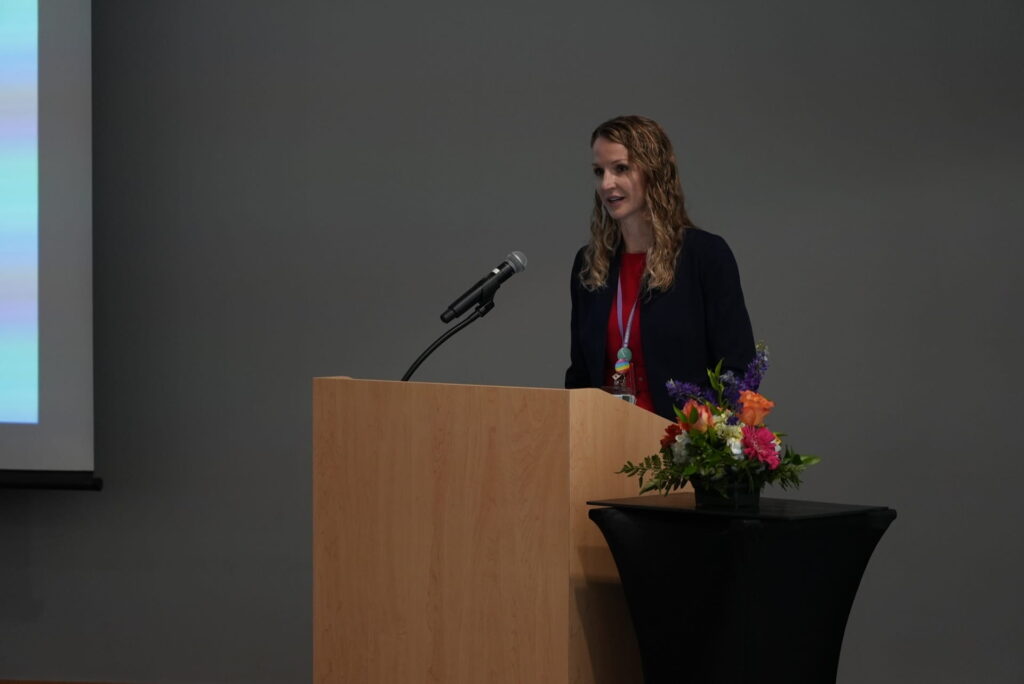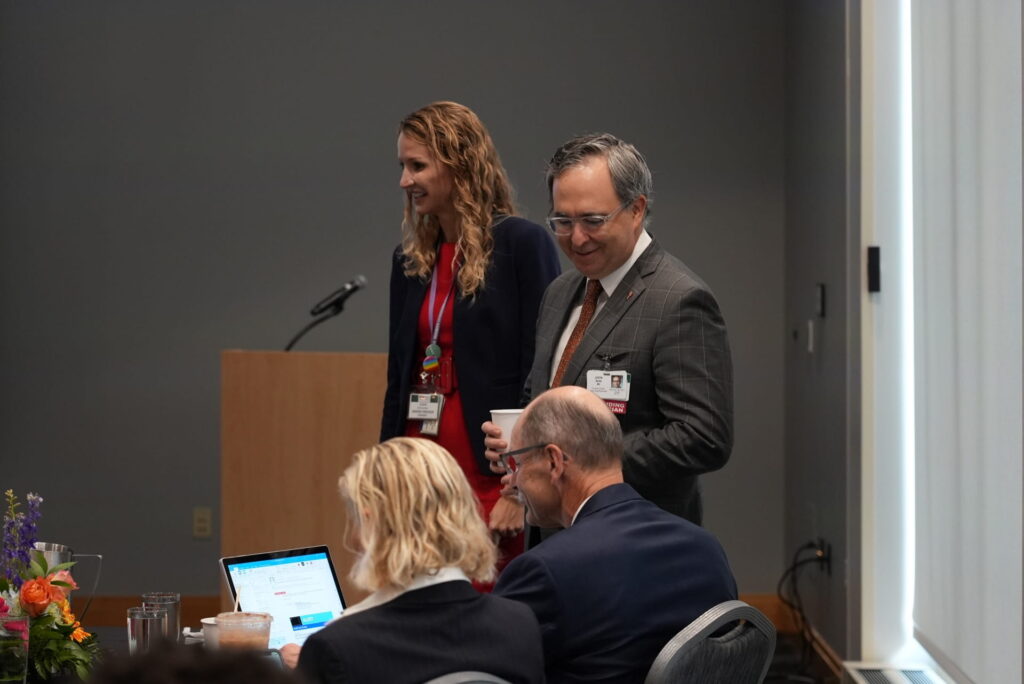This June, the Division of Plastic and Reconstructive Surgery held its 26th annual James Barrett Brown Visiting Professor and Research Day. The event featured podium and poster presentations from the Plastic Surgery Research Laboratories, an address from a distinguished visiting professor and the presentation of annual awards.
“If you read the history of plastic surgery, literally and figuratively, everything started here, in the center of the country, in St. Louis. This is an historic place that has done fundamental work, transformational to plastic surgery. Through a generous gift from the James Barrett Brown family, we celebrate the history of plastic surgery,” says Division Chief of Plastic and Reconstructive Surgery Justin Sacks, MD, MBA, who is the Sydney M. Shoenberg, Jr. and Robert H. Shoenberg Endowed Chair in Plastic and Reconstructive Surgery. “Here in the Division of Plastic and Reconstructive Surgery, we are building the process for how we are going to investigate fundamental questions in basic science, translational medicine and in clinical care. In the last two years, we have doubled the amount of clinical faculty, tripled the amount of dedicated research faculty, grown our residency program by twenty-five percent and grown our fellowship by thirty percent. I couldn’t be prouder of what we have done over the past two years, and I can’t tell you how excited I am to see what we accomplish in the years to come. I invite you all to join us on this journey.”
Steven R. Buchman, MD, served as the 26th Annual James Barrett Brown Visiting Professor. Buchman, who is the Haskell M. Newman Professor of Plastic Surgery and director of the Craniofacial Anomalies Program at University of Michigan Medical School, delivered an address titled “Overcoming the Constraints of the Functional Matrix: The Importance of Surgical Overcorrection in Pediatric Craniofacial Surgery.”
“When we operate on kids, we operate in the fourth dimension: time,” says Buchman, who also serves as chief of pediatric surgery at C.S. Mott Children’s Hospital.
His address described the history of the understanding epigenetic roles in craniofacial development, how these understandings have evolved in head and neck surgery over the years, and the applications of functional matrix theory in his craniofacial surgical practice today.
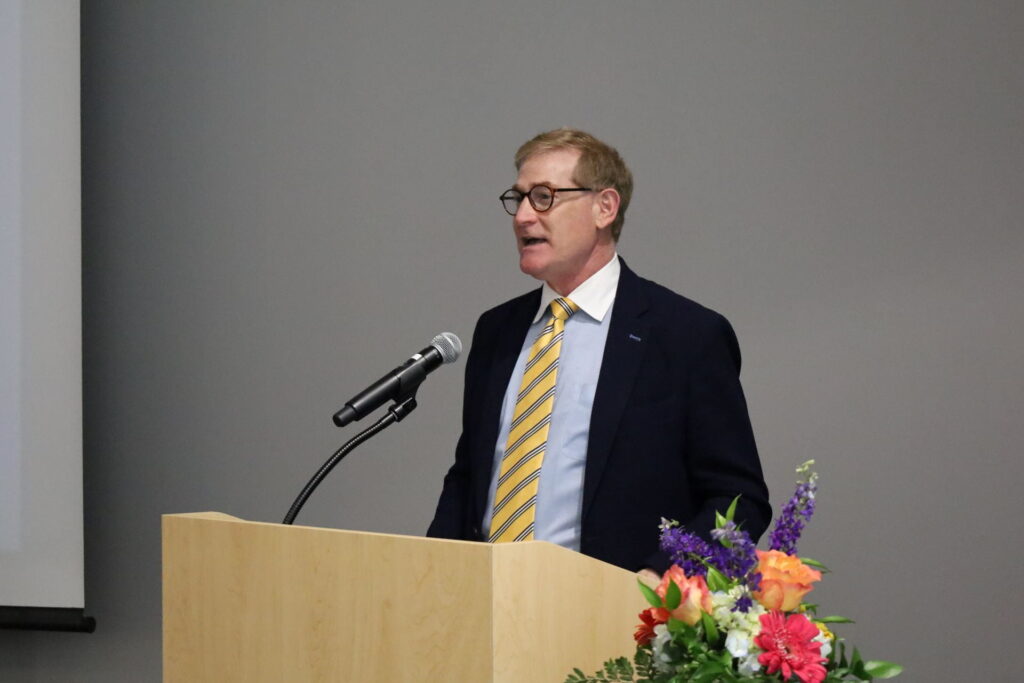
Buchman noted that plastic surgeons today stand on the shoulders of giants: those surgeons, including Brown, who came before and laid the groundwork for innovations in clinical care being achieved today.
“Dr. Brown was not just an outstanding clinical surgeon; he was also a pioneering transplantation scientist whose seminal work helped pave the way for Joe Murray’s eventual Nobel Prize,” says Buchman.
The annual event honors the legacy of James Barrett Brown, MD, who served as chair of plastic and reconstructive surgery at Washington University School of Medicine in St. Louis from 1955 to 1968. Brown earned his medical degree and completed surgical training at the School of Medicine, training under two surgical icons: the first full-time chair of the Department of Surgery, Evarts Graham, MD, and Vilray Blair, MD, the first division chief of plastic and reconstructive surgery. Together, Blair and Brown achieved critical advances in plastic and reconstructive surgery, reporting the first repeatable cleft lip repair and developing a split-thickness skin grafting technique still used today. After Blair’s death in 1955, Brown was appointed division chief and continued the tradition of excellence in plastic and reconstructive surgery. Brown made significant research contributions in the areas of skin grafting and head and neck surgery. Among his many honors, Brown was a founding member and eventual chair of the American Board of Plastic Surgery.
“Dr. James Barrett Brown quickly stood out among his peers. Today is a tremendous day in which we see some of the characteristics of Dr. Brown in our visiting professor, our trainees and our own faculty, and we are very excited to celebrate all the research and work that has been done over this past academic year.,” says Alison Snyder-Warwick, MD, an assistant professor of surgery and director of the Plastic Surgery Residency Program.
Podium and poster presentations from the Plastic Surgery Research Laboratories represented the breadth of basic science, translational, clinical, educational and innovations research in the division’s research programs. With subjects ranging from the pandemic’s impact on breast reconstruction to gene expression after nerve injury, the the presentations from over 20 researchers highlighted the diverse research interests of trainees and faculty at the medical school. Each year, presenters are recognized for their outstanding research.
The Best Poster Presentation Award for the 26th Annual James Barrett Brown Visiting Professor and Research day went to plastic surgery resident Ema Zubovic, MD.
Andrew Linkugel, MD, and Amelia Van Handel, MD, received the Best Podium Presentation Awards.
The event was followed by the plastic surgery residency graduation ceremony.
Podium Presentations
| Presenter | Presentation title | Mentor(s) |
|---|---|---|
| Fawaz M. Alotaibi, MD, FRCSC | Use of long acellular nerve allograft in surgical treatment of painful neuromas improves patient-reported pain and quality of life | Susan E. McKinnon, MD, FACS, FRCSC |
| Curtis J. Brogberg, BS | TBX21 expression is enhanced at the NMJ after Injury and is required for appropriate reinnervation | Alison K. Snyder-Warwick, MD, FACS |
| Jordan G. Bruce, MD | Epidemiology of acute surgical upper extremity infections at a tertiary care center: Risk factors, prognostic indicators, and clinical outcomes | Ida K. Fox, MD |
| David Chi, MD, PhD | A multi-institutional survey and outcomes analysis on calvarial vault remodeling techniques for sagittal synostosis in patients treated at 12-months and older | Kamlesh B. Patel, MD, MSc |
| Sarah N. Chiang, BS | The impact of the COVID-19 pandemic on alloplastic breast reconstruction: An analysis of national outcomes | Justin M. Sacks, MD, MBA, FACS; Joani M. Christensen, MD |
| Danielle C. Cooper, MD | International maternity/parental leave policies and their impact on surgical specialties | Kelly B. Currie, MD; Susan E. Mackinnon, MD, FACS, FRCSC |
| Annahita R. Fotouhi, BA | School-age neurodevelopmental outcomes in patients with sagittal craniosynostosis | Kamlesh B. Patel, MD, MSc |
| Giorgio Giatsidis, MD, PhD | A non-invasive point-of-care tool for anatomical mapping of the superficial venous system in the superficial circumflex iliac artery perforator (SCIP) flap and preoperative planning | John M. Felder, MD, FACS |
| Austin Y. Ha, MD | Clinical and radiographic predictors of postoperative abdominal donor site outcomes in autologous breast reconstruction | Terence M. Myckatyn, MD, FACS, FRCSC |
| Shea Harrison, MD | Use of a pocket card to increase knowledge and utilization of community resources within surgery residents at Washington University in St. Louis | Kelly B. Currie, MD |
| Lauren Jacobsen, MD | Digital revision amputation: Demographic characteristics, treatment location, and timing of injury in 1101 consecutive patients | Mitchell A. Pet, MD |
| Alexandra M. Keane, MD | Immediate post-mastectomy implant-based breast reconstruction: An outpatient procedure? | Terence M. Myckatyn, MD, FACS, FRCSC; Marissa M. Tenenbaum, MD |
| Adam Liebendorfer, MA | GATA1 knockout mice have decreased eosinophils, macrophages, and nerve regeneration after injury | Matt D. Wood, PhD |
| Andrew D. Linkugel, MD | Magnetic resonance cranial imaging in pediatric patients: evaluation of both motion corrected and automated deep learning pseudo-CT estimated MR images | Kamlesh B. Patel, MD, MSc |
| Evan B. Marsh, BS | Electrical stimulation and tacrolimus (FK506) both enhance recovery after nerve surgery, while the dual use of both therapeutics reduces variance in functional outcomes | Susan E. Mackinnon, MD, FACS, FRCSC; Alison K. Snyder-Warwick, MD, FACS; Matt D. Wood, PhD |
| William Morwitz, MD | Cutaneous microcirculatory flow sensing for flap monitoring in a porcine model of arterial and venous occlusion | Mitchell A. Pet, MD |
| Rachel Skladman, MD | Perception of smile asymmetry among the general population | Alison K. Snyder-Warwick, MD, FACS |
| Kashyap K. Tadisina, MD | Nerve transfers can improve upper extremity function in cervical spinal cord injury: A prospective proof-of-concept study | Ida K. Fox, MD, FACS |
| Robert M. Teixeira, MD | Trends in nerve transfer procedures among board-eligible plastic surgeons | Susan E. Mackinnon, MD, FACS, FRCSC |
| Amelia C. Van Handel, MD | Geo-demographics of ballistic injuries to the upper extremity | Mitchell A. Pet, MD |
| William Zhu, MD | Silver-impregnated foam dressings in the treatment of nonoperative pediatric hand burns | Amy F. Kells, MD, PhD, FACS |
Poster Presentations
| Presenter | Presentation title | Mentor(s) |
|---|---|---|
| Danielle J. Brown, MD | Antibiotic prophylaxis and infectious complications in isolated gunshot wounds to the upper extremity | Mitchell A. Pet, MD |
| Anna Rose Johnson, MD, MPH | Center of excellence designation: The Washington University lymphatic surgery experience | Joani M. Christensen, MD |
| Jonah P. Orr, MD | Patient hand hygiene: Attitudes and intervention | Kelly B. Currie, MD |
| Rachael M. Payne, MD | Gunshot wound injuries to the hand: Can we & should we salvage finger fractures? | Mitchell A. Pet, MD |
| Erin C. Peterson, MD | Implementing a standardized system for Plastic Surgery consult patient follow-up | Amy F. Kells, MD, PhD, FACS |
| Damini Tandon, MD | Mandibular condylar neck fractures: A treatment algorithm | Dennis C. Nguyễn, MD |
| Kenan Tawakina, MD | Mapping calcification patterns in flap and recipient vessels | John M. Felder, MD, FACS |
| Ema Zubovic, MD | Development of a simulation tool for teaching alveolar bone grafting | Kamlesh B. Patel, MD, MSc; Alison K. Snyder-Warwick, MD, FACS |
